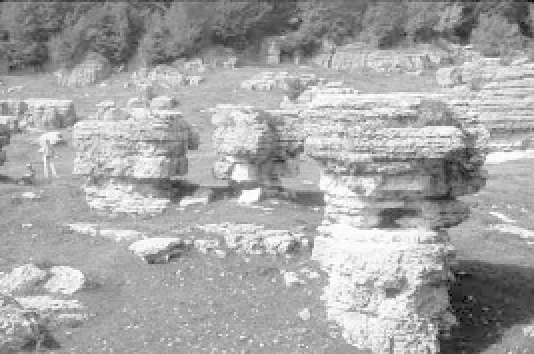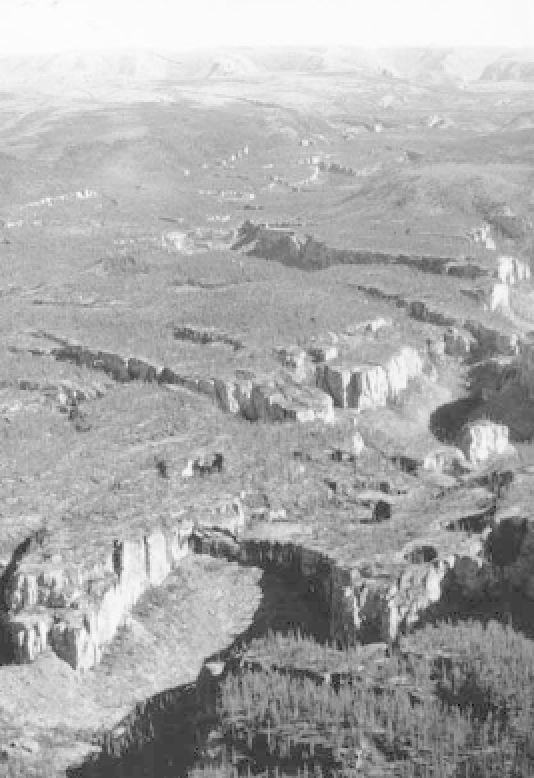Geology Reference
In-Depth Information
Papua New Guinea and Mount Api in Sarawak, consists
of bare, net-like, saw-topped ridges with almost verti-
cal sides that stand up to 120 m high. The spectacular
ridges rise above forest-covered corridors and depres-
sions. They seem to have formed by limestone solution
without having previously been buried.
semi-arid areas. Smaller-scale versions are known from
the Nahanni limestone karst region of the Mackenzie
Mountains, Canada (Brook and Ford 1978). Here, the
labyrinth karst is stunning, with individual streets longer
than 1 km and deeper than 50 m (Plate 8.6).
Coastal karren
Ruiniform karst
Around coasts and lakes, limestone or dolomite outcrops
often display a distinctive solutional topography, with
features including intertidal and subtidal notches (also
called nips; Plate 8.7) and a dense formation of pits,
pans, micropits, and spikes (Plate 8.8). Boring and graz-
ing organisms may help to form coastal karren, as may
This is an assemblage of exceptionally wide grikes and
degrading clints that have been exposed by soil erosion
(Plate 8.5). The clints stick out like 'miniature city blocks
in a ruined townscape' (Ford and Williams 1989, 391).
Ruiniform karst is found in the French Causses, where
deforestation and soil erosion have occurred. On high
crests, ruiniform karst is transitional to limestone tors.
Corridor karst
In places, grikes grow large to form a topography of
aligned or criss-crossing corridors. The large grikes are
called
bogaz
, corridors,
zanjones
, and streets. Grike-wall
recession produces square-shaped or box valleys and large
closed depressions called
platea
. Corridor karst land-
scapes are called
labyrinth karst
,
corridor karst
,or
giant
grikeland
. It is large-scale clint-and-grike terrain but may
have a complex history of development. Grikelands form
under tropical and temperate rainforest and in arid and
Plate 8.6
View of Nahanni labyrinth karst, showing
intersecting networks of karst streets interspersed with
karst platea.
(
Photograph by George A. Brook
)
Plate 8.5
A ruiniform assemblage (residual clint blocks) in
flat-lying limestones near Padua, Italy.
(
Photograph by Derek C. Ford
)


